Rajasthan Itinerary (14 Days):
Colors, Culture & Calm in Jaipur, Udaipur & Beyond
Rajasthan Itinerary (14 Days):
Colors, Culture & Calm in Jaipur, Udaipur & Beyond
India
India had always existed in my imagination as a land of contrasts, of sacred rituals and restless cities, of colors too vivid to describe and silences too deep to forget. When I finally set foot in Rajasthan, I understood why travelers speak of India not as a destination, but as an experience that changes you. From the first breath, the air carried both dust and divinity. Every scent, sound, and smile seemed to whisper, slow down, you’re exactly where you need to be.
This journey wasn’t about ticking boxes on a map. It was about learning to see the beauty in imperfection, the poetry in chaos, and the grace in simplicity. Over two weeks, as I wandered through Jaipur, Udaipur, Bundi, and Pushkar, Rajasthan unfolded before me like a living canvas painted with color, devotion, and the quiet wisdom of those who find joy in little things.
When I first arrived in Jaipur, I was instantly enveloped by its rhythm, a gentle chaos that somehow made perfect sense. The air shimmered with dust and sunlight, painted in hues of saffron and rose. Rickshaws wove between camel carts, temple bells rang in the distance, and every corner seemed alive with both history and heartbeat. This was Rajasthan’s capital, regal, raw, and deeply human.
My first moments in the Pink City were a sensory flood. The scent of chai mixed with marigolds from street vendors, the hum of traffic, and the ever-watchful eyes of monkeys perched above the gates. Jaipur wasn’t just a city; it was an introduction, a handshake from India itself, firm yet welcoming, chaotic yet kind.
Jaipur’s soul reveals itself slowly, one archway at a time. Inside the City Palace, I wandered through courtyards wrapped in silence and elegance, each marble corridor whispering the stories of maharajas who once ruled this desert kingdom. The light filtered through delicate latticework, casting patterns that felt alive.
At the Hawa Mahal, or Palace of Winds, the afternoon breeze carried centuries of women’s laughter, royal queens who once gazed unseen at the streets below. As I stood there, watching life unfold in the bazaar, I understood something essential about India. It preserves the past not by locking it away, but by letting it breathe alongside the present.

A few days later, I arrived in Udaipur, a city so different it felt like a dream. The road wound through dry hills before revealing a mirror of calm, Lake Pichola, its waters shimmering like glass beneath a golden sky. Palaces floated upon it, reflecting light in a way that made time feel irrelevant.
I spent my mornings wandering along the ghats, watching locals bathe, pray, and greet the rising sun with a calm acceptance that fascinated me. By evening, candlelit boats drifted across the lake, and I found myself sitting quietly by the water, realizing that sometimes the most profound beauty asks for silence, not words.
One of the most memorable days in Rajasthan didn’t happen inside a palace or fort; it happened under a thatched roof. In a small rural village outside Udaipur, I sat cross-legged with a group of local musicians. Their instruments were simple, drums, strings, and hands that spoke rhythm instead of language.
They played, and I clapped along, awkwardly at first, until laughter bridged the gap between us. Someone handed me a small glass of steaming chai, sweet and strong, and in that moment, surrounded by music and warmth, I felt a connection deeper than any conversation could express. India’s gift, I realized, is its ability to make you feel at home among strangers.
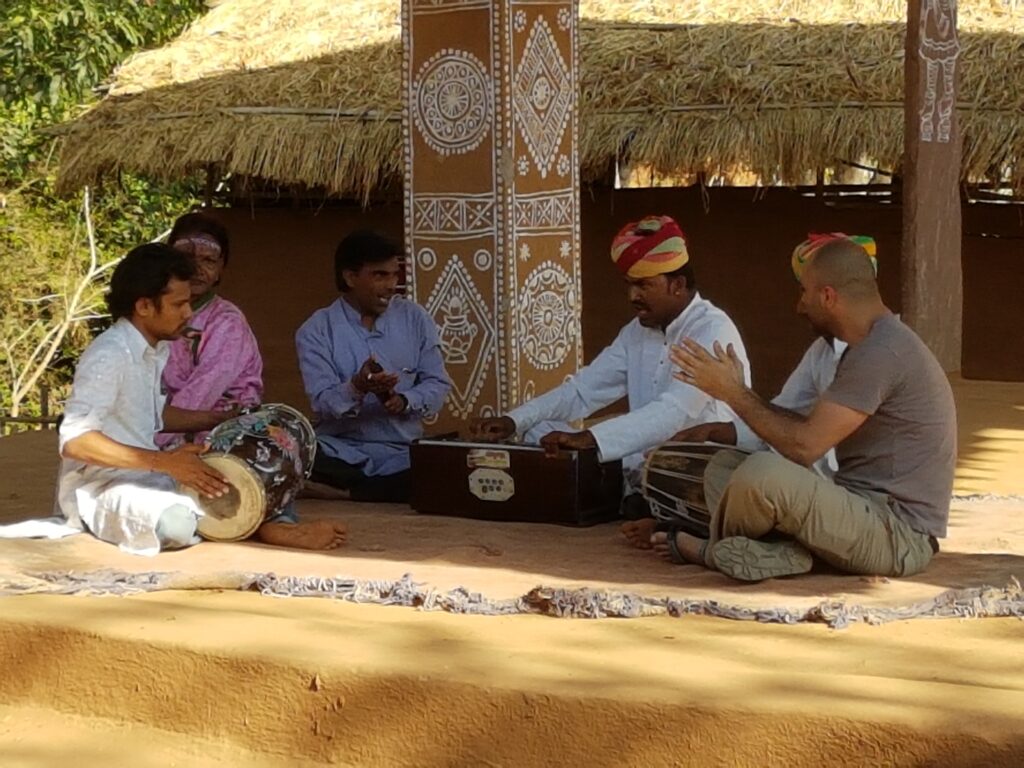
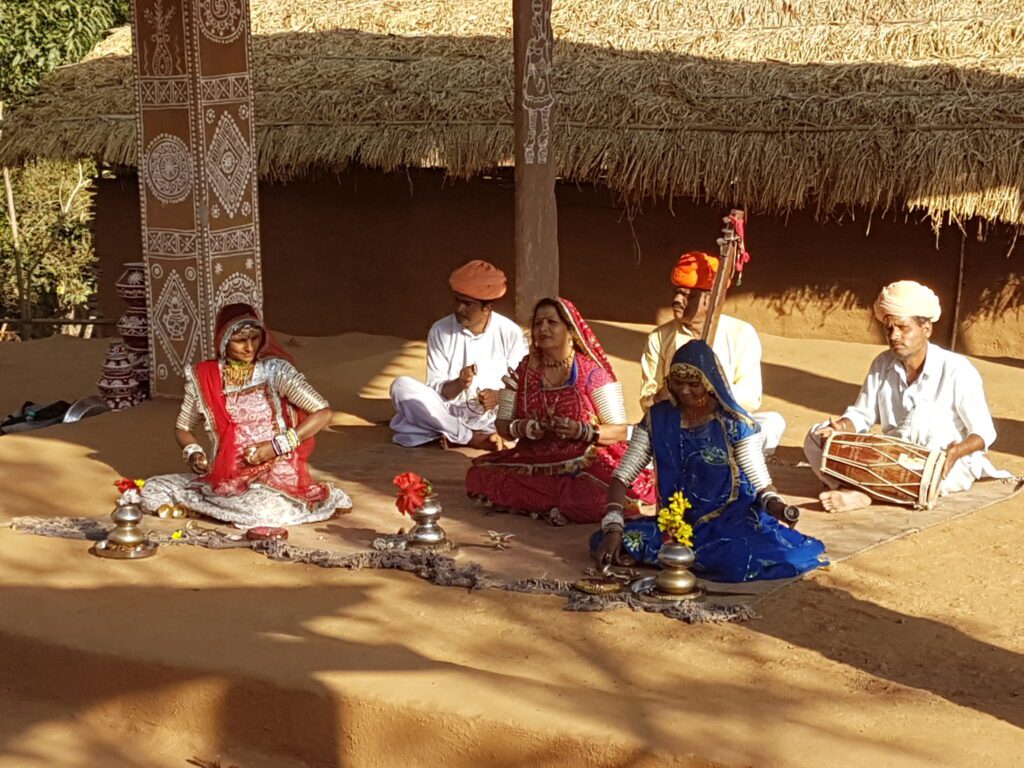
If Jaipur was royal and Udaipur poetic, Bundi was a secret, a forgotten masterpiece painted in shades of blue and ochre. The town rose gently against a backdrop of rolling hills, crowned by the Taragarh Fort, whose walls glowed like honey under the setting sun.
I wandered its narrow alleys where life unfolded slowly, children played cricket in courtyards, women painted doorframes with sacred patterns, and shopkeepers called out with genuine curiosity rather than salesmanship. At night, the fort illuminated the town like a guardian spirit. In Bundi, I didn’t feel like a visitor. I felt like I had stepped into a story the world had simply forgotten to tell.
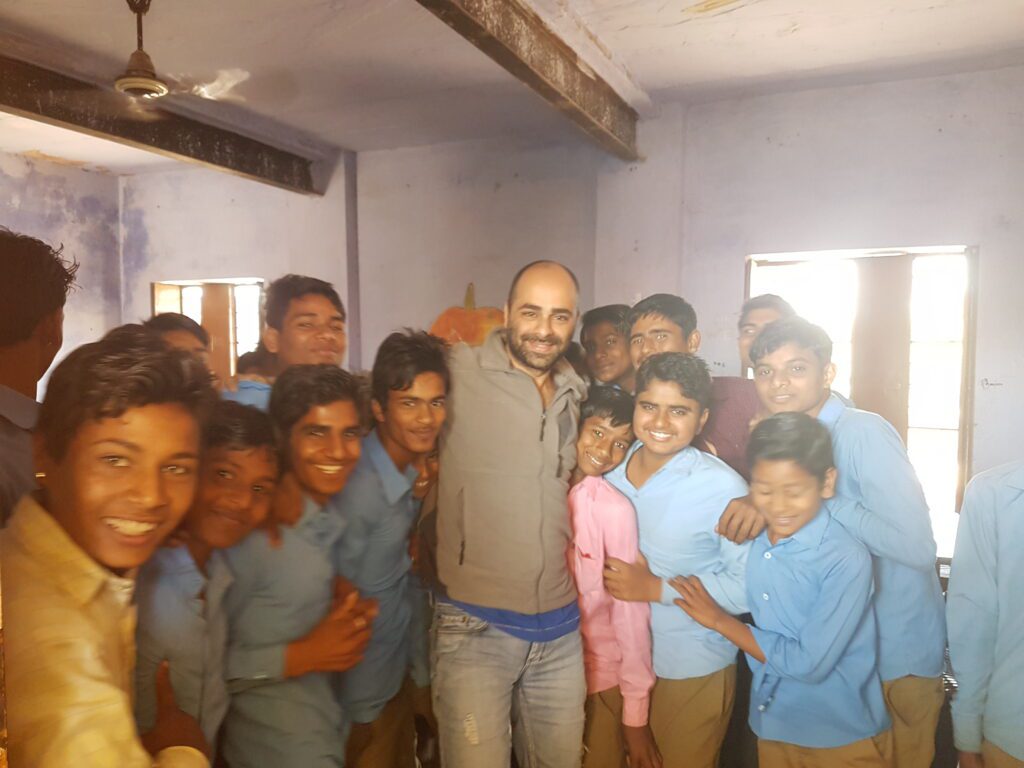
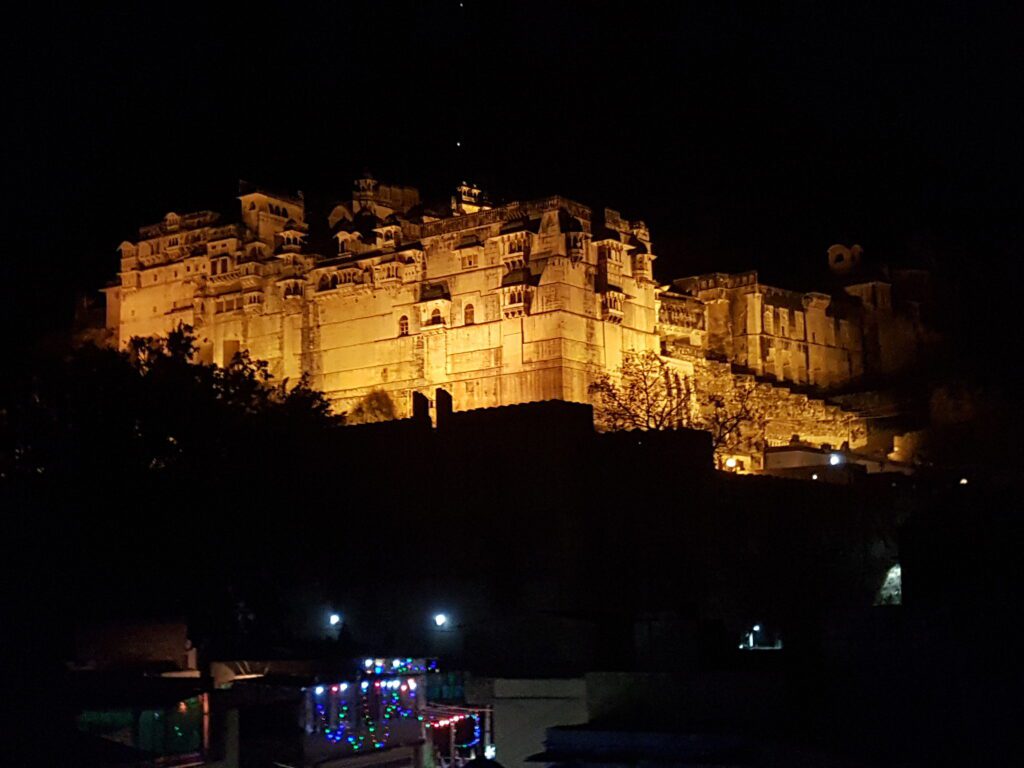
No words can truly prepare you for Holi in Pushkar. The small desert town transformed overnight into a swirling ocean of color, laughter, and music. Within minutes, my skin was coated in powders of pink, yellow, and electric blue, gifts from strangers who shouted “Happy Holi!” with joy so pure it was impossible not to laugh back.
The streets became a living painting. Drums pounded, clouds of color exploded in the air, and for a few hours, every barrier dissolved, race, age, religion, all forgotten in the name of celebration. I remember looking around, covered in color, realizing that sometimes chaos isn’t meant to be controlled. Sometimes it’s meant to be embraced.
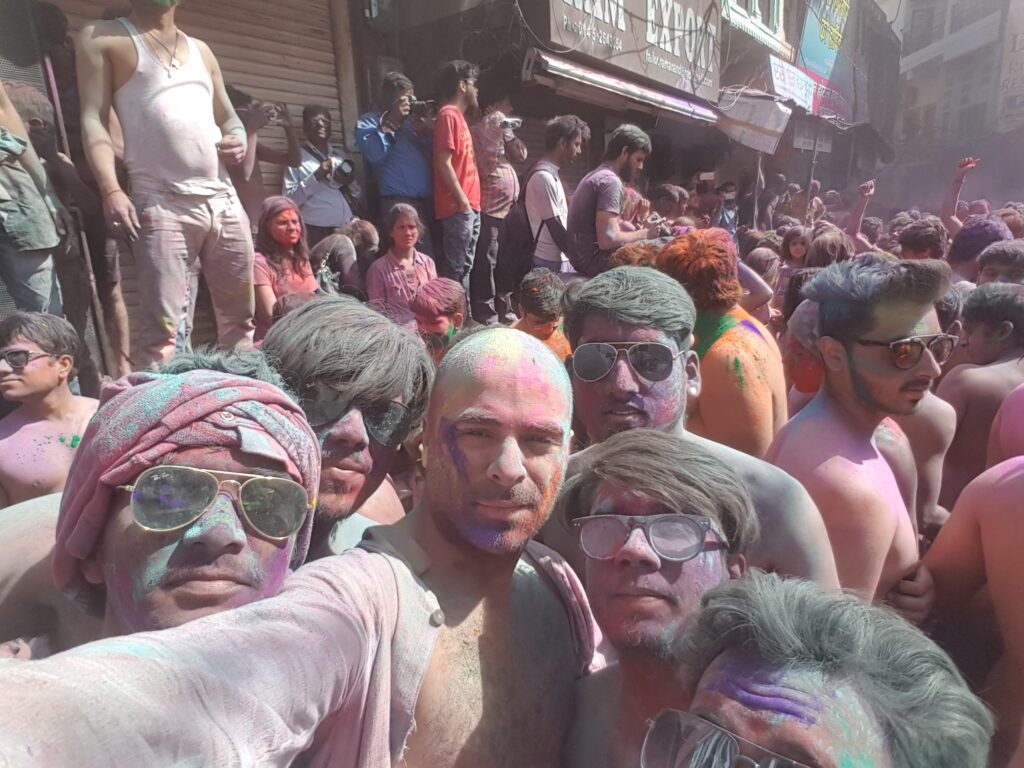

Throughout my two weeks in Rajasthan, I met people whose simplicity carried more grace than any luxury could buy. The old man who served me tea in a dusty roadside stall smiled as if he owned the sunrise. The group of schoolchildren who surrounded me for a photo laughed with the kind of joy that doesn’t need translation.
India, I discovered, doesn’t try to impress you; it invites you to feel. It strips away the noise of your daily life until all that remains is the essence of being present. Here, value isn’t measured in possessions, but in moments shared and memories made.
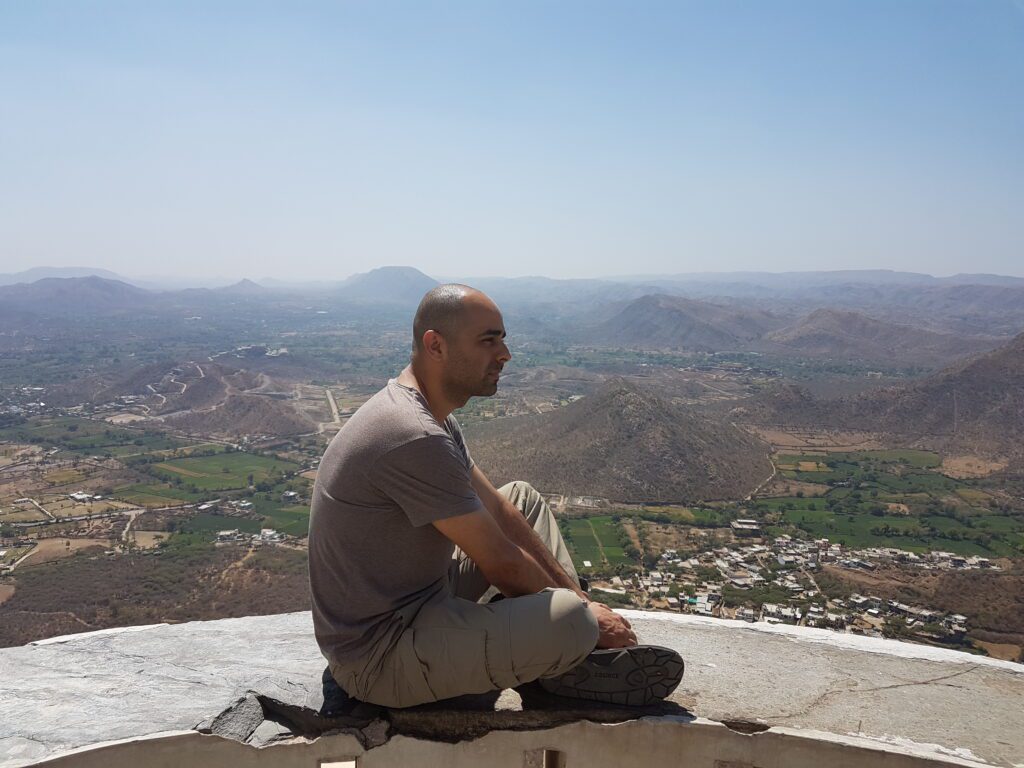
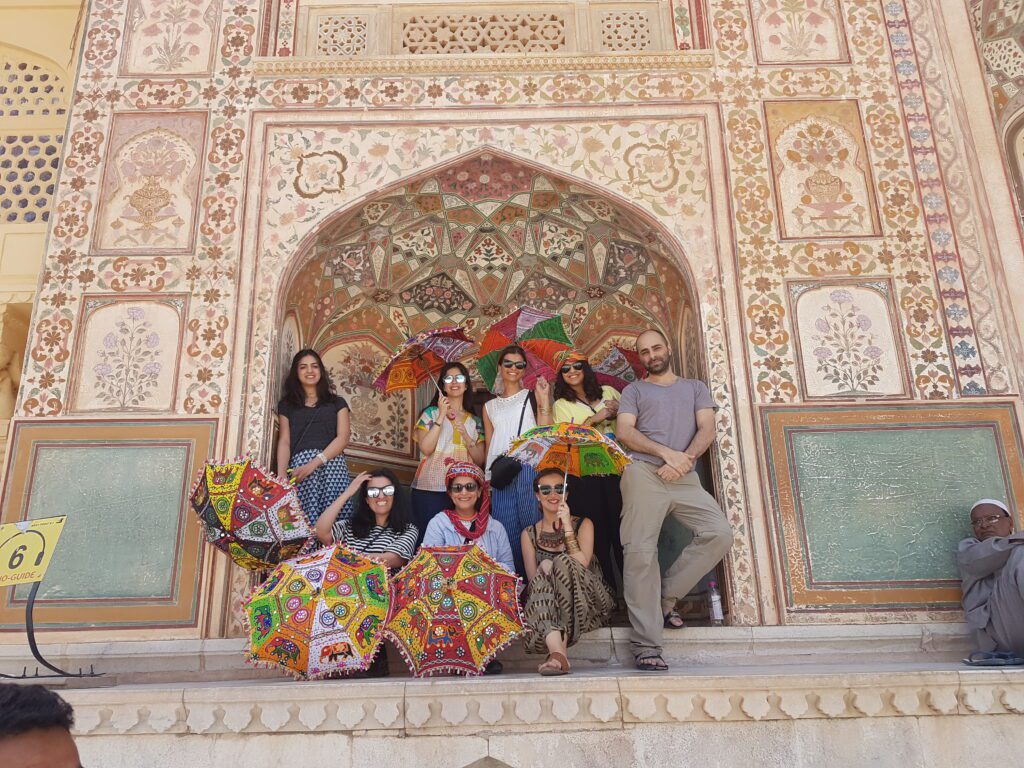
As my journey came to an end, sitting atop a hill overlooking the valleys of Rajasthan, I understood what this land had quietly taught me. Travel isn’t always about discovery; sometimes it’s about unlearning. India reminded me that life doesn’t need to be perfect to be beautiful; it only needs to be real.
I left with dust on my shoes, color on my skin, and clarity in my mind. Rajasthan didn’t just show me its forts and festivals; it showed me perspective. In its simplicity, I found abundance. In its chaos, I found calm. And somewhere between the laughter of strangers and the echo of temple bells, I found a softer, humbler version of myself.
We use cookies to improve your experience on our site. By using our site, you consent to cookies.
Manage your cookie preferences below:
Essential cookies enable basic functions and are necessary for the proper function of the website.
You can find more information in our Cookie Policy.